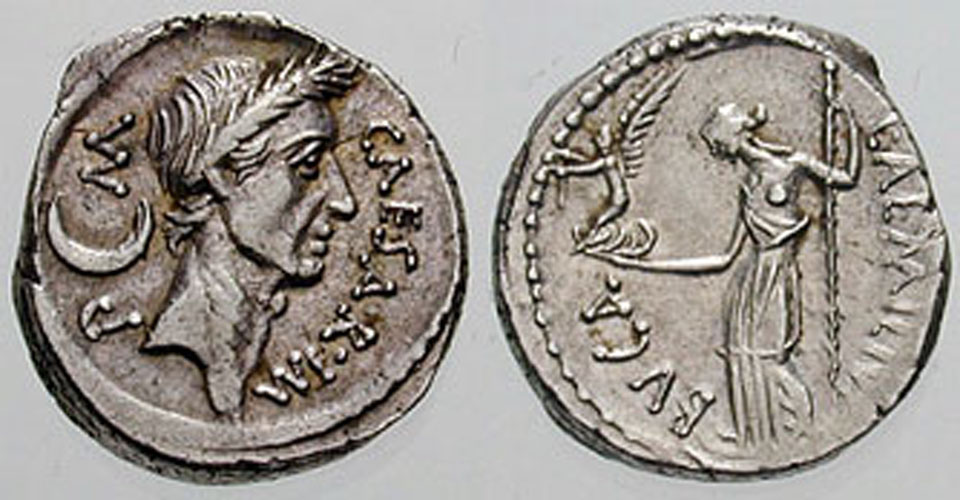凱撒大帝和閏日
Julius Caesar and Leap Days

發表日期:2024-02-29
公元前 46 年,凱撒大帝改革了曆法系統。根據亞歷山大的天文學家索西根尼的建議,儒略曆每四年增加一個閏日,以反映地球年的長度略多於 365 天這一事實。用現代術語來說,地球繞太陽轉一圈的時間是 365 . 24219 個平均太陽日。因此,如果日曆年正好是 365 天,那麼每 4 年就會偏離地球年 1 天,最終七月(以凱撒大帝命名)就會出現在北半球的冬季。如果採用每四年多一天的閏年,儒略曆年份的偏移就會大大減少。 1582 年,教皇格列高裡十三世(Pope Gregory XIII)做出進一步微調,規定閏日不應出現在以 00 結尾的年份,除非能被 400 整除。這就是今天廣泛使用的格里高利曆法系統。當然,地月系統中的潮汐摩擦減緩了地球的自轉,使一天逐漸延長,每個世紀延長約 1 . 4 毫秒。這意味著,大約 400 萬年後,像今天這樣的閏日就沒有必要了。這枚羅馬銀幣(denarius)描繪的是凱撒大帝(左)和羅馬愛神維納斯。
原文:In 46 BC Julius Caesar reformed the calendar system. Based on advice by astronomer Sosigenes of Alexandria, the Julian calendar included one leap day every four years to account for the fact that an Earth year is slightly more than 365 days long. In modern terms, the time it takes for the planet to orbit the Sun once is 365.24219 mean solar days. So if calendar years contained exactly 365 days they would drift from the Earth's year by about 1 day every 4 years and eventually July (named for Julius Caesar himself) would occur during the northern hemisphere winter. By adopting a leap year with an extra day every four years, the Julian calendar year would drift much less. In 1582 Pope Gregory XIII provided the further fine-tuning that leap days should not occur in years ending in 00, unless divisible by 400. This Gregorian Calendar system is the one in wide use today. Of course, tidal friction in the Earth-Moon system slows Earth's rotation and gradually lengthens the day by about 1.4 milliseconds per century. That means that leap days like today will not be necessary, about 4 million years from now. This Roman silver coin, a denarius, depicts Julius Caesar (left) and Venus, Roman goddess of love.
※ 本文由萌芽機器人自動轉貼自每日一天文圖(Astronomy Picture of the Day,APOD),原文為英文,正體中文是透過 DeepL 翻譯及 OpenCC 進行自動處理,內容僅供參考,若有任何錯誤之處還請見諒!
關於每日一天文圖:每日一天文圖網站是美國國家航空暨太空總署與密西根理工大學提供的服務,網站每天提供一張影像或圖片,並由天文學家撰寫扼要說明其特別之處。